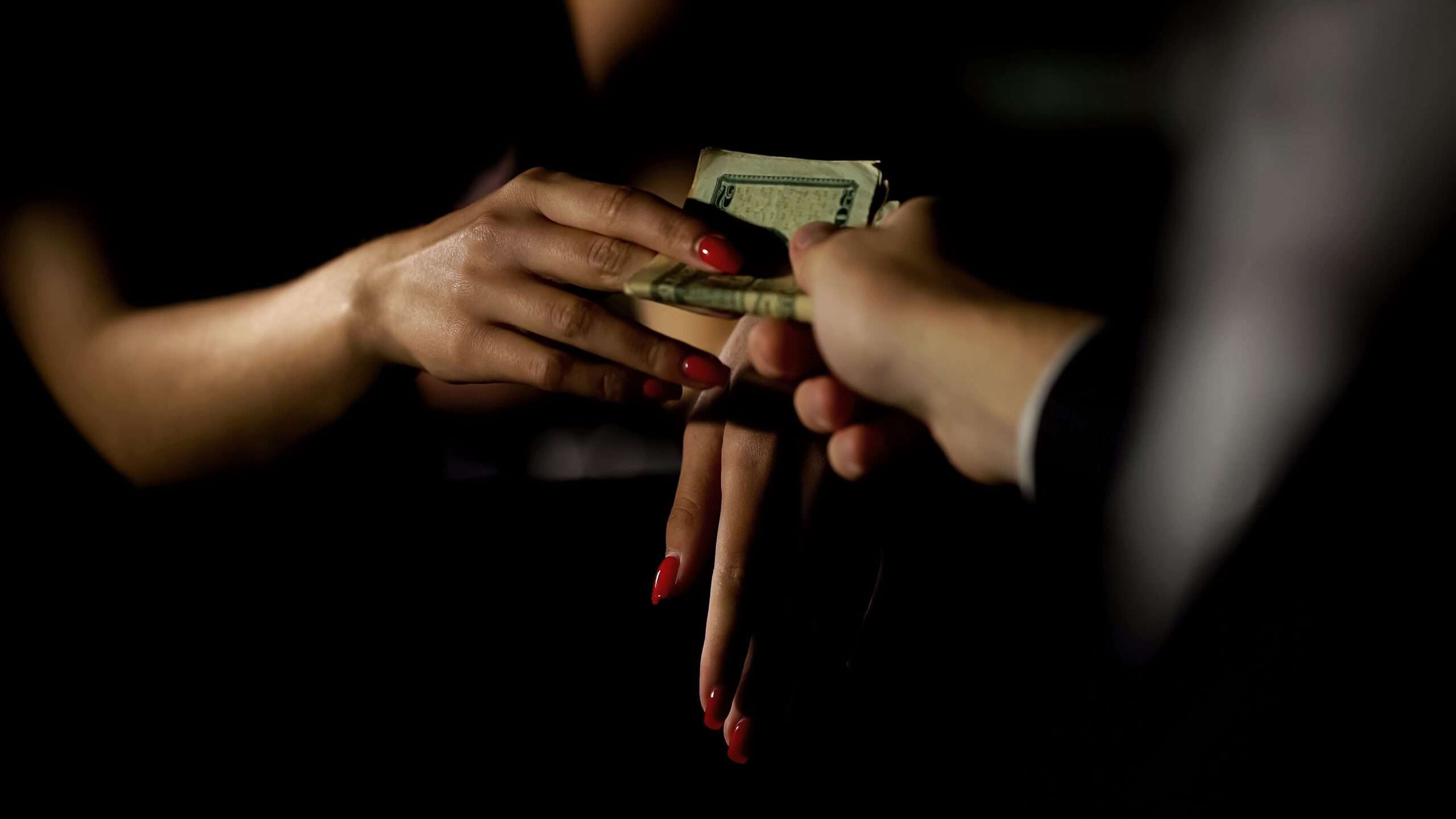What is prostitution? The controversial and complex issue of prostitution has been debated for centuries. Sexual services are traded for money or other forms of compensation in prostitution. In addition, it is frequently connected to mistreatment, hostility, and labeling. The definition, impacts, and controversies of prostitution are still under much debate despite its attention in various media and public discourse.
In this article, we will investigate what is prostitution and the different dimensions of prostitution and attempt to illuminate this often-misconstrued subject. Throughout history, we will explore diverse forms and contexts of prostitution and assess its effect on individuals and society.
Furthermore, our exploration will entail studying the economic dynamics present in the industry and challenging stereotypes associated with prostitutes. Our goal with these conversations is to offer readers a fuller comprehension of a subject often veiled in secrecy.
Defining Prostitution: Understanding the Different Forms and Contexts
What is prostitution? Exchanging sexual services for money or other forms of compensation is essentially what prostitution involves. The various forms and contexts in which prostitution occurs can complicate and nuance its definition. Street prostitution could be considered the most prevalent type by some. Yet, it represents only a fraction of a grander mystery.
Some common activities include escort services, brothels, sex tourism, and trafficking for sexual exploitation. Survival sex is also included. Effectively addressing the complex issue of prostitution involves crucially understanding each unique dynamic and challenge. A customized method is necessary for each aspect. It’s important to recognize that some individuals engaging in prostitution are not doing so willingly or on their own agency.
Historical Perspectives: How Prostitution Has Evolved Over Time
In human societies throughout history, prostitution has been present, dating back to the ancient civilizations of Greece, Rome, and India. Many cultures accepted and regulated prostitution. Men got sexual gratification, and women got economic opportunities. The perception of prostitution shifted to being a deviant and sinful behavior as societies became more structured and moralistic.
In the 19th century, the movement against prostitution gained momentum due to concerns over public health and morality. Many countries have made prostitution criminal and penalized individuals involved in its operation. Poverty and inequality, despite efforts to stop them, often drive the persistence of prostitution. In recent decades, many countries have acknowledged that criminalizing prostitution has negative consequences and adopted different approaches, such as decriminalization or legalization.
Controversies Surrounding Prostitution: Debating the Legality, Morality, and Ethics
The legality, morality, and ethics of selling sex for money raise serious questions in the context of prostitution, which is a highly complex and controversial issue. In addition, it is a theme that calls for meticulous reflection and astute assessment. The safety and rights of sex workers will be safeguarded if prostitution, a personal choice and legitimate business, is decriminalized, argue advocates calling for regulation.
Those against prostitution argue that it is inherently exploitative and promotes gender inequality; thus, it should remain illegal. They contend that individuals of legal age must be free to partake in consensual sexual endeavors without facing arrest or prosecution. However, critics perceive prostitution as immoral and exploitative, diminishing women and sustaining gender inequity. The notion is that engaging in prostitution leads to inherent harm for those involved as sellers or buyers of sexual services, fosters human trafficking, and supports the advancement of organized criminal activity. Moreover, it encourages the dehumanization of females.
Diverse strategies have been employed globally to address the prostitution controversy. To minimize harm and boost public health, prostitution has been legalized or decriminalized in certain countries. Others have enforced criminal sanctions across all areas of sex work.
Politicians, law enforcement officials, feminist groups, and religious institutions have different views on whether or not the current laws should ensure the safety of prostitutes, which often leads to disagreements. They posit that prostitutes need to be prosecuted based on what they do. Taking into account the safety and well-being of those involved in the sex industry is crucial.
The Impact on Society: Exploring the Effects on Individuals, Communities, and Public Health
Society is profoundly affected by the complexity of prostitution’s impact and What is Prostitution. Prostitution’s effects extend beyond individual participants to impact the lives of their families, communities, and public health. Exposure to STIs, emotional trauma, and violence are significant risks that come with prostitution and can harm one’s physical and mental health. These risks can result in chronic pain and mental health disorders as severe enduring physical implications.
Furthermore, prostitution at high levels can cause increased crime rates, drug usage, and social challenges within communities. An adverse effect on the well-being of residents in these areas can result from creating a negative environment. The negative reputation associated with prostitution can impede people from seeking help or support. Besides, it might curtail their availability of healthcare services.
The Business of Prostitution: Analyzing the Economics and Power Dynamics
The sex trade is a convoluted sector encompassing financial and authoritative intricacies frequently concealed from the public eye. The estimate put the value of the sex industry worldwide at billions of dollars. Besides, many individuals engage as workers, clients, or profiteers. Supply and demand, legal frameworks, cultural attitudes towards sexuality, and social inequalities are among the various factors shaping the business of prostitution. Also, these factors collaborate with each other to generate a complex and multifarious industry.
The sex trade involves both formal and informal levels, from high-end escort services to street-based solicitation. The economic facets of prostitution differ by region and country. Also, they commonly involve a network of individuals who profit from the trade. Pimps or managers generally manage the work schedules and earnings of prostitutes in exchange for protection or other services. Charging rent to prostitutes or taking a commission from their income enables brothel owners to profit from the sex industry.
The Vulnerability of Prostitutes: Examining the Intersection of Race, Gender, and Class
The involvement in prostitution is typically connected with poverty and the absence of opportunities, which makes individuals more susceptible to exploitation. Not solely economic factors expose individuals to the risk of prostitution. Considering the intersectionality of race, gender, and class is crucial when examining the vulnerability of prostitutes.
Prostitution disproportionately affects women and transgender individuals. Furthermore, their gender identity increases their risk of encountering violence and exploitation. Systemic inequalities like racism, discrimination, and restricted availability of educational and professional opportunities can put women of color at higher risk for involvement in prostitution. Furthermore, systemic inequalities often restrict their options and force them into this particular line of work. Consequently, any endeavor focused on solving the issue of prostitution must take into consideration how marginalized communities may be particularly impacted by it.
The Stigma of Prostitution: Challenging the Stereotypes and Misconceptions
Negative stereotypes and misconceptions have long been associated with prostitution. The media commonly portrays prostitutes as people who participate in illegal activities, with a reputation for being morally corrupt and having drug addiction and disease. Nevertheless, this depiction isn’t always correct and disregards the intricate variables that cause people to involve in prostitution. Challenging these stereotypes and misconceptions is necessary to foster a more detailed comprehension of prostitution.
Many prostitutes fall victim to exploitation, abuse, or poverty rather than being criminals seeking easy money. Economic circumstances or mental health issues could limit their choices. Prostitutes also encounter social stigma from society and law enforcement because of their profession. Those who wish to exit prostitution often struggle to obtain social support due to the attached stigma. It can also impede their readmission into society after departing.
Alternative Approaches: Considering Different Strategies and Solutions
Addressing the issue of prostitution requires innovative strategies and effective solutions. One alternate approach is the Nordic Model, which has become popular recently. Purchasing sexual services is a criminal offense, while their sale is not illegal. The target is to redirect blame from prostitutes to clients and decrease demand for prostitution.
A possible solution to remove penalties for prostitution is decriminalization. According to advocates, decriminalization can decrease violence against sex workers and facilitate their access to improved healthcare and social services. Furthermore, it can enhance working conditions. Although, objectors are anxious that it could cause a surge in trafficking and exploitation.
One cannot address prostitution with a solution that fits all. Cultural norms, economic factors, public health concerns, and human rights considerations require a nuanced approach. Exploration of various strategies and solutions can aid in moving towards a world where poverty or vulnerability doesn’t lead vulnerable individuals into prostitution. Securing the human rights and dignity of every person requires this crucial step.
Personal Reflections: Sharing Stories and Experiences from Real People
It’s crucial to remember that behind every statistical and policy debate regarding prostitution lies a real person with an exceptional story. Valuable insights into this complex issue can be gained by hearing firsthand from those who have experienced prostitution.
Jenny used to be a prostitute but manages a support organization that aids women leaving the sex industry. She discussed her story about getting started in prostitution. To support herself financially, Jenny started selling sex after struggling with addiction and homelessness. While the work drained her both physically and emotionally, she also found a certain addictive quality to it. She could finally leave the industry with aid from individuals who had shared her experience.
As a teenager, Mark was trafficked into prostitution, and he similarly spoke about the trauma he experienced during his time in the industry. As required, he performed sexual acts despite feeling trapped and powerless against his will. Mark discussed finding healing through therapy and support groups.
Prostitution survivors exhibit both toughness and struggle in these narratives. Policy decisions or public debates always have real people with deeply affected lives behind them, reminding us.
Conclusion
The problem of prostitution is intricate and multidimensional, concluding that it cannot be easily solved. The discussions about its legality, morality, and ethics will influence our understanding and reaction to this phenomenon. Additionally, it will greatly affect our future approach.
In the ongoing discussion, Delhi Night, our agency that provides a escorts service in Chanakyapuri, takes part. Moreover, maintaining a transparent and honest conversation about the sector is important. We understand controversies surrounding prostitution. Supplying a secure and lawful facility for consenting grown-ups is essential. The escort service in Mahipalpur we offer are of legal age and have chosen their profession without coercion. We protect our clients and ensure girls’ safety and privacy.





